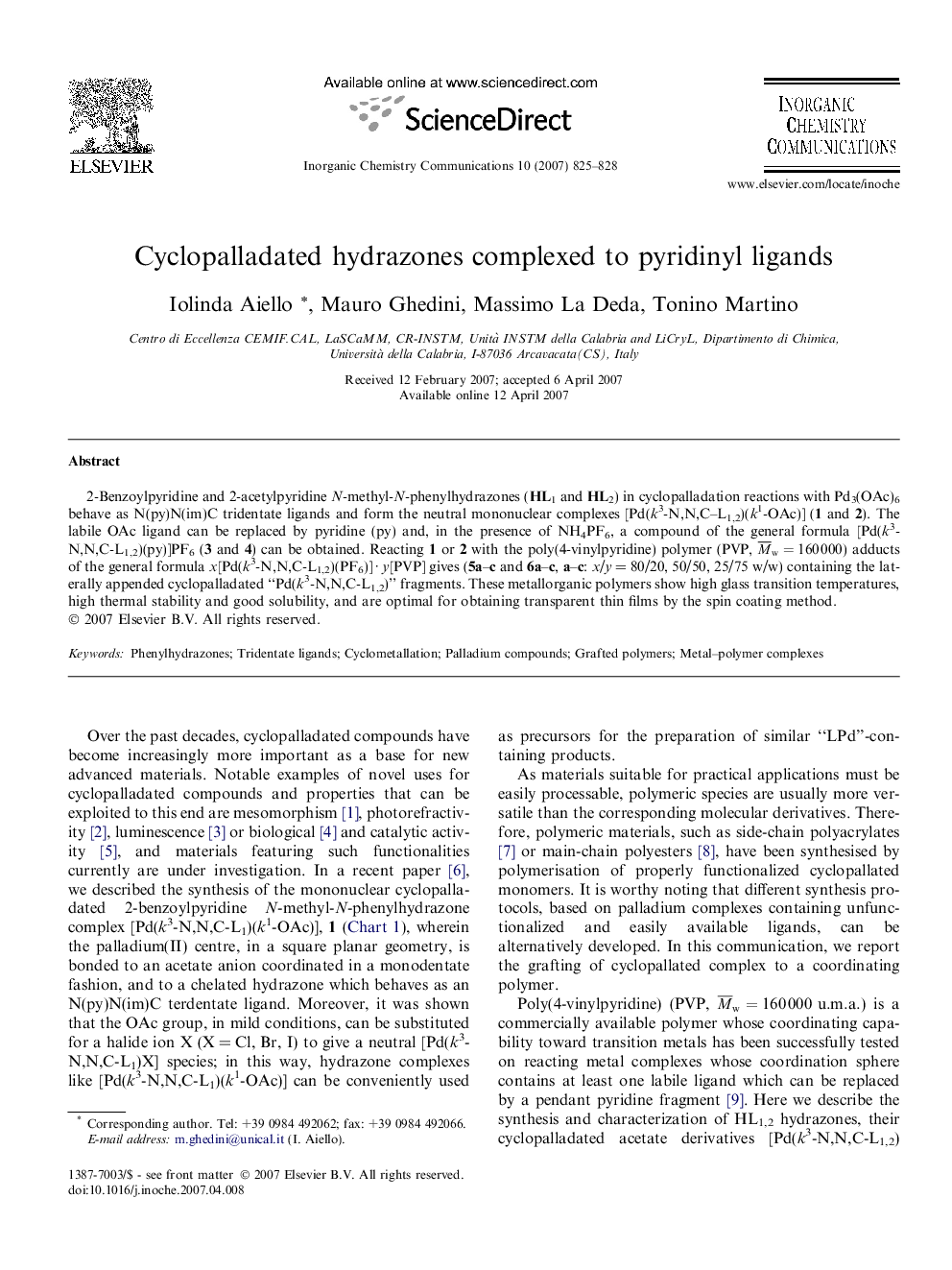| Article ID | Journal | Published Year | Pages | File Type |
|---|---|---|---|---|
| 1303388 | Inorganic Chemistry Communications | 2007 | 4 Pages |
2-Benzoylpyridine and 2-acetylpyridine N-methyl-N-phenylhydrazones (HL1 and HL2) in cyclopalladation reactions with Pd3(OAc)6 behave as N(py)N(im)C tridentate ligands and form the neutral mononuclear complexes [Pd(k3-N,N,C–L1,2)(k1-OAc)] (1 and 2). The labile OAc ligand can be replaced by pyridine (py) and, in the presence of NH4PF6, a compound of the general formula [Pd(k3-N,N,C-L1,2)(py)]PF6 (3 and 4) can be obtained. Reacting 1 or 2 with the poly(4-vinylpyridine) polymer (PVP, M¯w=160000) adducts of the general formula x[Pd(k3-N,N,C-L1,2)(PF6)] · y[PVP] gives (5a–c and 6a–c, a–c: x/y = 80/20, 50/50, 25/75 w/w) containing the laterally appended cyclopalladated “Pd(k3-N,N,C-L1,2)” fragments. These metallorganic polymers show high glass transition temperatures, high thermal stability and good solubility, and are optimal for obtaining transparent thin films by the spin coating method.
Graphical abstractTwo series of PVP polymers grafting various amount of Pd(II) complexes of terdentate hydrazones were successfully synthesized. The obtained products were characterized in solution and as spin coated thin films.Figure optionsDownload full-size imageDownload as PowerPoint slide
